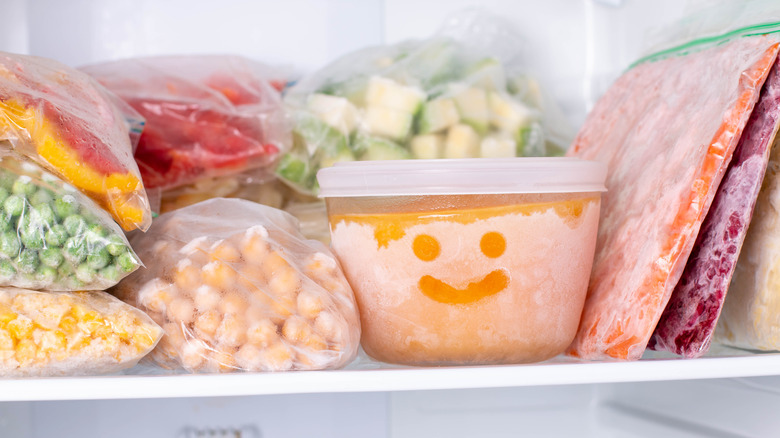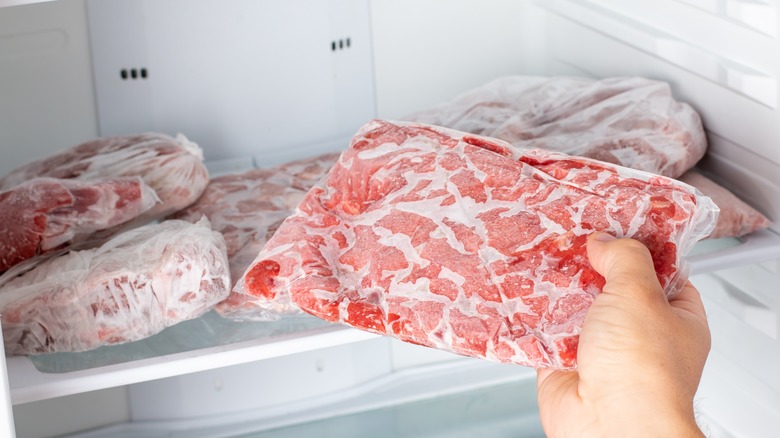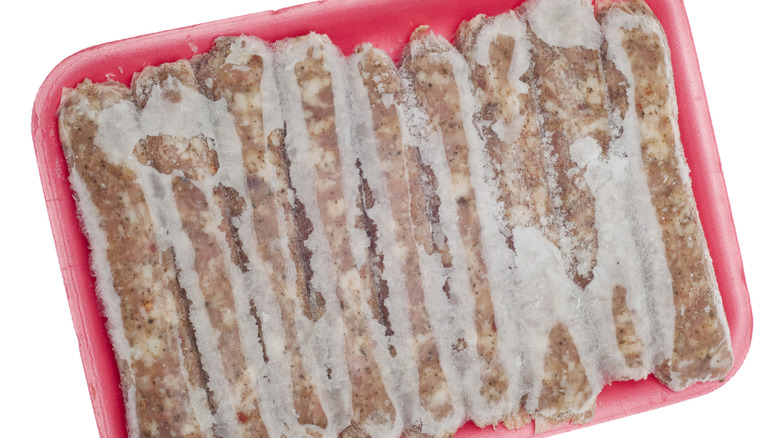Does Freezing Food Kill Harmful Bacteria?
According to Feeding America, over 100 billion pounds of food is tossed in the trash every year, nearly half of the total amount of food manufactured in the same time frame. While spoilage is inevitable in modern mass production and food preparation, a lot of this waste could be avoided with the simple act of freezing.
The modern practice of freezing for preservation is credited to 20th-century fur trader and inventor Clarence Birdseye, who spent his life mastering the art of quick freezing after noting that indigenous people in northern Canada utilized the bitter winter weather to preserve meat (via Britannica).
Today, freezing food is a great way to keep it fit for consumption. However, to ensure that your food is as safe as possible, you need to be aware of all the steps involved in properly freezing food. You also need to be careful about how you prepare it, as frozen food can still house potentially hazardous bacteria if it wasn't made correctly in the first place.
Freezing food doesn't kill bacteria, but will keep it at bay
According to the CDC, the bacteria, viruses, and parasites that can reside in food have been linked to over 250 different diseases. Of course, that doesn't immediately doom you to suffer a food-borne disease. Per the USDA, you can keep yourself safe from some of those pathogens by freezing your food at zero degrees Fahrenheit or cooler.
However, the fact that your food has frozen solid doesn't mean you can completely forget about harmful bacteria. To use your food, you're going to need to thaw it out. Once food has thawed, any bacteria or other nasties that might be lurking in the food can reactivate and begin to spread. Therefore, you should consider the threat of bacteria to be dormant, not dead.
The FDA tells us that perishable food items left out at room temperature for only two hours can become a breeding ground for bacteria. If the temperature is 90 degrees Fahrenheit or above, that time is cut in half. As such, you should refrigerate or freeze food as quickly as possible after cooking. Once it's time to thaw the food, be sure to follow basic food safety practices, like the USDA's rules for safely freezing and thawing food, as well as managing leftovers.
How to freeze food the right way
As per FoodSafety.gov, if you freeze your food at or below zero degrees Fahrenheit, it will essentially remain safe for consumption in perpetuity, assuming you heat it properly when you're ready to eat. However, we can't say the same about frozen food's quality.
The primary suspect behind the degradation of your frozen food's quality is freezer burn. As Inverse explains, freezer burn is the result of sublimation, the process of a solid transforming into a gas without taking the intermediary step of becoming a liquid. This means that, in your freezer, the ice in your frozen goods vaporizes and reattaches itself to your food in the form of ice crystals. Freezer-burned food is still safe for consumption, but its taste and texture will likely be less than ideal.
However, you can take steps to prevent freezer burn. If your freezer is kept sufficiently cold, it will freeze food faster, which makes it more difficult for freezer burn's characteristic crystals to form. Additionally, placing your food in airtight storage containers before freezing will keep its frozen water content from leaching out toward the outside air.


